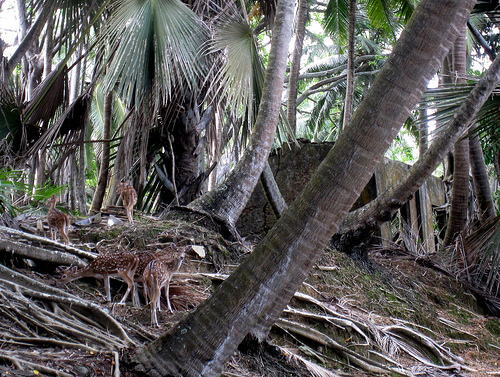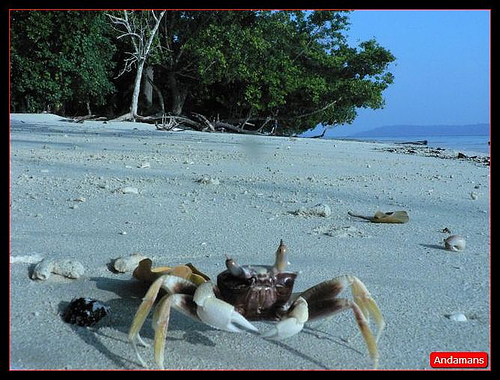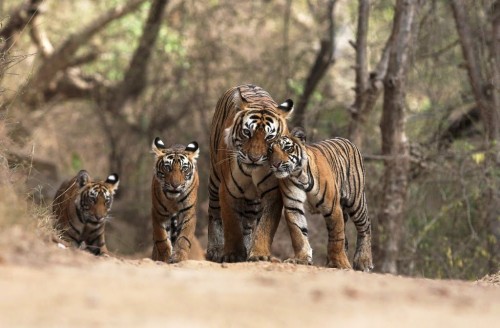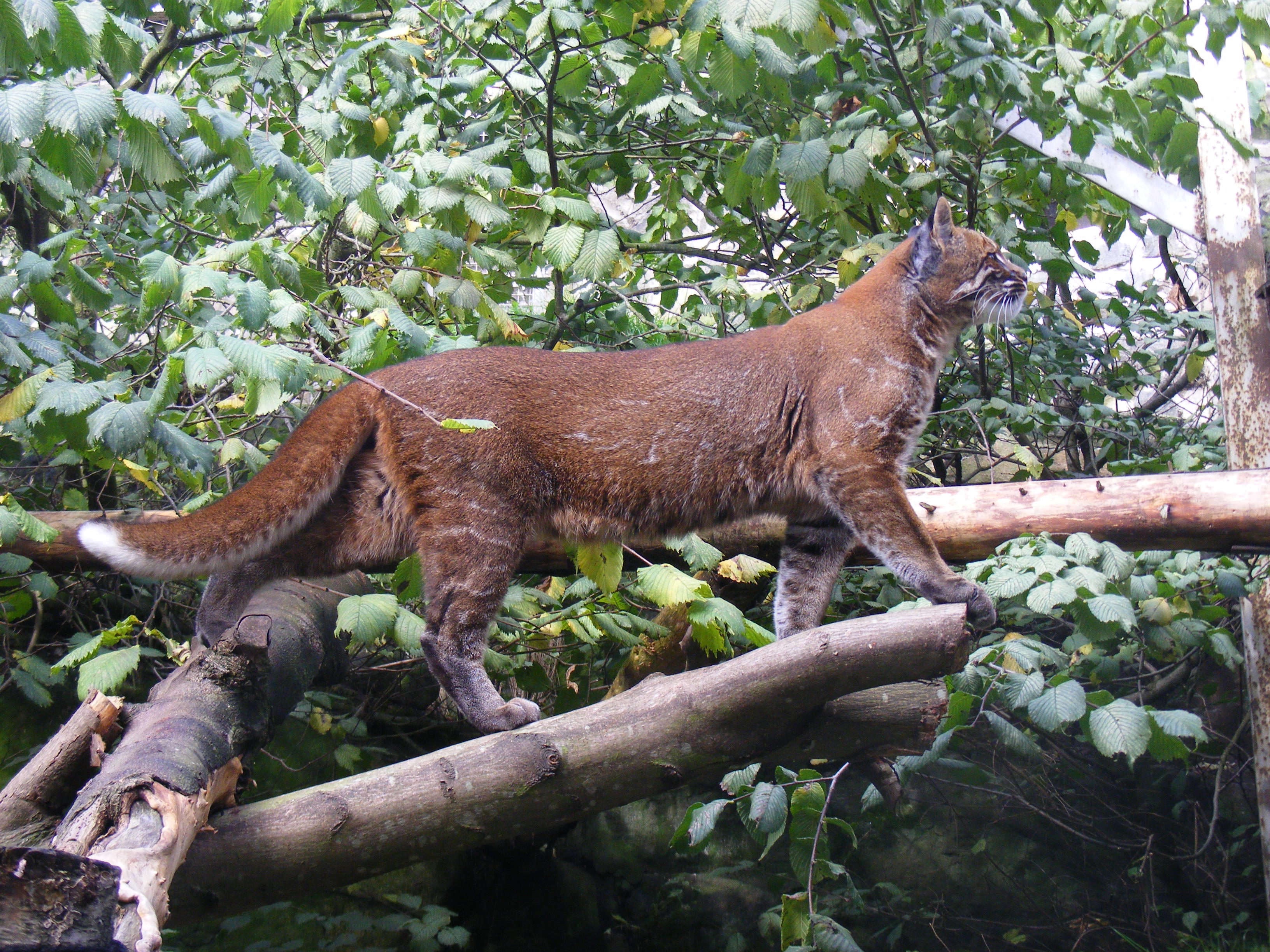The tropical rainforests of Andaman Islands are facing a bizarre ecological as well as economic crisis, due to the no-hunting policy of the Indian Government. Invasive species such as deer and elephants are fast eating into the pristine forest cover of these islands as there are no natural predators to keep their numbers in check.
An invasive species, also called invasive exotics or exotics, is a species that is accidentally or artificially introduced into a biosphere where it is not normally found. In the absence of a natural predator, as it generally happens, the invasive species thrives and causes economic and environmental damage due to the imbalance created by its introduction.
India is one of the few countries in the world that does not have a policy on invasive species.
Harmful Herbivores
The spotted deer or Chital was introduced to the Andaman Islands as a game animal in the 1930s by the British. Having no natural predators or competitors, and being natural swimmers, the Chital swiftly spread across all the islands of the Andaman, except Little Andaman. Elephants, on the other hand, were introduced from mainland India in the 1880s.
“The herbivore species are causing the vegetation to decrease significantly,” says Rauf Ali from the Foundation for Ecological Research, Advocacy and Learning (FERAL) in Puducherry.
Ali and other scientist from FERAL and Juniata College, Pennsylvania, recently carried out a research at four locations on the Andaman- Interview Island, Little Andaman, Jarawa Reserve, and MG Marine Park.
The report stated that besides the wild pig, which is omnivorous, the islands do not have any other native herbivore, and that the country-wide ban on hunting has aggravated the damage caused by these invasive species.
The researchers conducted a comparative study of Normalised Difference Vegetation Index (NDVI) trends across the four locations over a fixed period. Satellite images show that Little Andaman, which does not have any invasive species, has the least degradation, while Interview Island, with populations of both elephants and spotted deer, has suffered maximum degradation. Jarawa Reserve and MG Marine Park, which have only deer population, showed moderate degradation.

The elephants have severely damaged the green cover in recent years, causing the forest regeneration rate to increase abnormally. The damage can be clearly witnessed in the form of uprooted or knocked down trees, or in trees stripped of their bark.
The chital, on the other hand, adversely affects regeneration by grazing on seedlings.
Voicing his concerns over the large-scale degradation observed in a relatively short period, Ali stressed on the urgent need to implement internationally accepted scientific principles to check the environmental and economic damage caused by these invasive species.
“If a policy change allowing hunting to take place is made, then the removals would actually generate revenue for the Andaman and Nicobar Administration,” the report suggested.
It also added that since culling of elephants is out of question due to their endangered status,
“periodic translocation of the younger animals to areas in mainland India, or overseas appears to be a solution”.
Biodiversity of Andamans
The Andaman-Nicobar group of islands is considered to be a veritable storehouse of plant biodiversity. Situated between two major biodiversity hotspot, namely the Indian subcontinent and the Malaysian-Indonesian region, it is hardly surprising that the Islands manifest biodiversity of extraordinary range within a limited geographical area.
Geographically, the islands are part of the long Island Arch extending from the Arakan Yoma hill range of Myanmar to the Sumatran range of Indonesia. The unique positioning of these islands between the two major biodiversity areas endows it with an unmatched distribution of plants with representatives of the Indian, Myanmarese, Thai, Malaysian and Indonesian floras.
The flora of the Andaman group of islands shows closer affinity to the Indo-Myanmarese-Thai flora, while the Nicobar groups of islands are closer to the flora of Malaysia-Indonesia.
Here are some amazing facts about the island’s biodiversity,
- 85 percent of the islands are occupied by forests.
- While these islands account for only 0.2% of the land mass of South Asia, they have approximately 9% of its endemic avifauna.
- There are nine national parks and 96 sanctuaries comprising of small islands and one biosphere reserve. These areas constitute 19.6% of the geographical area under protected area network. Thus A&N island has a larger area under protected area network than the national average of 4.9%.
- The mangrove forests occupy 12% of geographical area with about 34 species. Mangroves acts as protector of shores and as a nursery ground for marine life like prawns, crab and other varieties of fishes.
- The islands have 2,500 species of flowering plants, of which 223 plant species are endemic.
- It has over 5,100 species of animals including 42 species of mammals of which 33 are endemic.
- There are also 76 species of reptiles, of which 24 are endemic and 254 species of birds, of which 96 are endemic.
- These islands also have 179 species of coral reef.
It is hence a peculiar problem that the islands face today. In the absence of predators, the exotic herbivores like spotted deers and elephants are destroying what has made Andaman & Nicobar a natural marvel for centuries. If region specific solutions are not planned soon, the variety of flora lost forever would be epic. Therefore, the policy change suggested by the researchers may be the only viable solution to preserve this unique ecosystem.
More Related Stories,
Home of the Hornbills Saved from Defence Radar
New Bird Discovered in Andaman & Nicobar Islands
Image via cc/Flickr by Venkatesh K , Snap and Stephen Krasowski








3 thoughts on “Invasive Species Eating Away Forest Cover Of Andaman Islands”